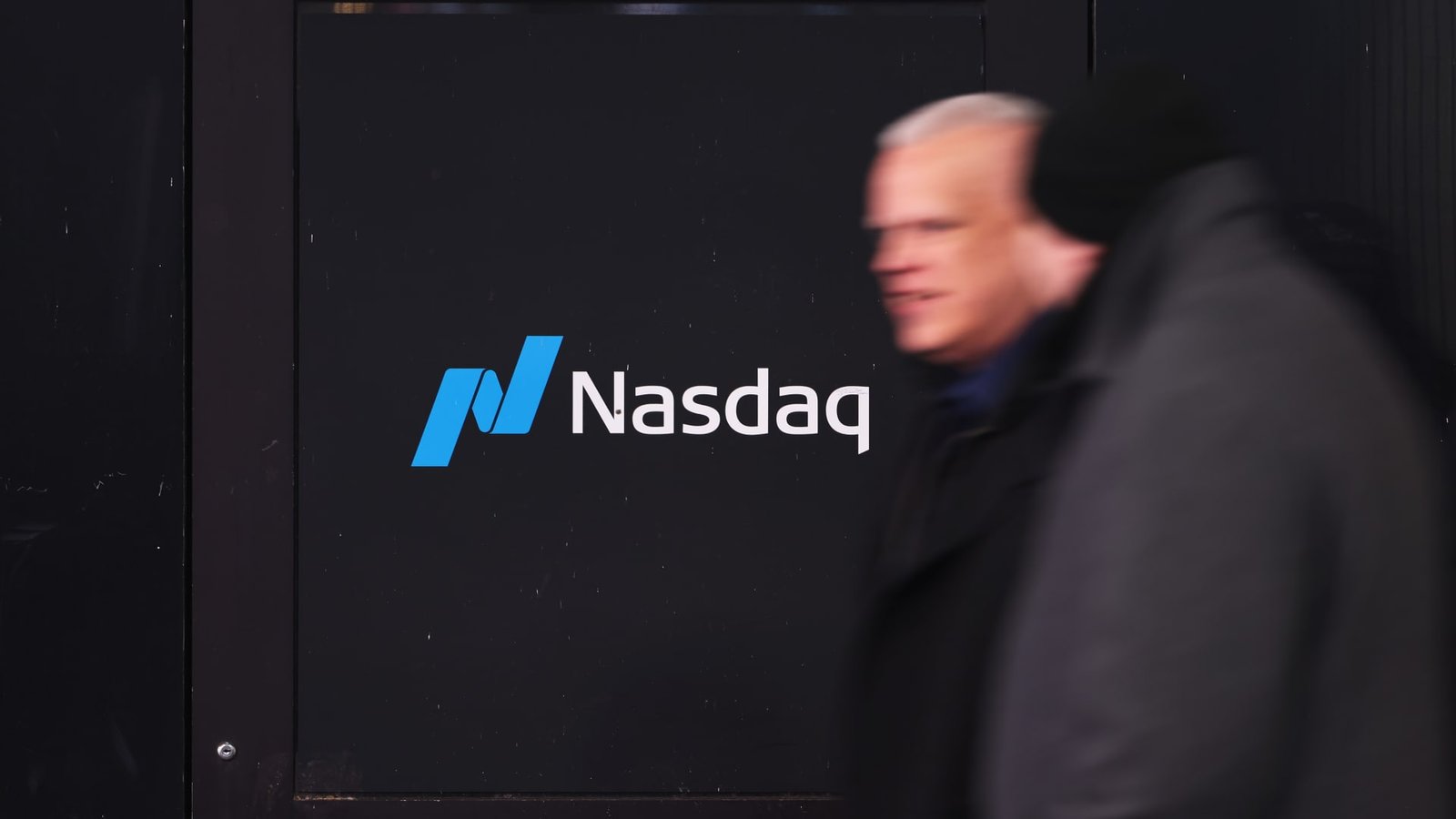Every weekday, the CNBC Investing Club releases the Homestretch with Jim Cramer – an afternoon update action, just in time for the final hour of trading on Wall Street. Market moves: Strength in tech stocks on Wednesday pushed the Nasdaq up nearly 2% above 20,000 for the first time. The S & P 500 jumped nearly 1%. Both Wall Street benchmarks were retreating after back-to-back losses. The Dow was staying out of the rally heading into late Wednesday trades. A lower close for the Dow would extend its losing streak to five straight sessions. Some of the big players in the market were the Magnificent Seven, Tesla as well as Club names Alphabet , Meta Platforms , Amazon and Apple hitting all-time highs. Apple hit a record high for the ninth consecutive session on Wednesday, helped by the release of new iPhone artificial intelligence features. Broadcom was the session’s top performer, jumping more than 6% on media reports that Apple is working to help develop its customer AI server chip. Broadcom reports earnings after the close on Thursday. The health sector, on the other hand, continued to perform weakly. Shares of major health insurers and pharmaceutical benefit managers were leading the pack after lawmakers introduced a bill to lower drug costs and reform PBMs. Drug stocks were also taking a hit, with Eli Lilly and Bristol-Myers Squibb club shares down on the day. Utilities, real estate and consumer staples were the other weak points in Wednesday’s market. The yield on the 10-year Treasury was higher, although the November report on consumer prices showed a rise in the inflation rate that was in line with the consensus forecast. The probability that the Federal Reserve will cut interest rates by 25 basis points at next week’s meeting rose to about 95% from 89% a day earlier, according to the CME FedWatch tool. The Fed kicked off the easing cycle with a 50 basis point rate cut in September and a 25 basis point cut in November. At that bank: Wells Fargo CEO Charlie Scharf spoke at Goldman Sachs’ Financial Services Conference earlier Wednesday. The conversation was not short-term focused, but more broad-based, with Scharf talking about big issues such as the macroeconomic environment, the bank’s strategic initiatives and the regulatory landscape. It was similar to Jim Cramer’s interview with Scharf in October. Here are some of Scharf’s key quotes from the speech. On President-elect Donald Trump’s incoming administration: “When you have an administration that is very focused on the U.S. economy, that, going forward, is good because it’s good for our customers.” On risk and the control process: “For every permit order we have, every regulatory deliverable we have, we have very detailed plans in place that have been reviewed by the regulators. And we track our progress in the operating committee. in one week… So that level of confidence that we’re getting things done When I talk to the bigger, we’re pushing things across the board because we see all these internal metrics.” On what happens after the asset cap is lifted: “In an environment of stronger loan growth, where we’re able to compete more on deposits, we get some expansion from consumer banking, it’s going to be about not having the asset cap. We don’t have it today and we haven’t had it for the last six or seven years. a huge advantage for us”. About cyber security: “Cyber security is the biggest risk we all face. We are all spending a lot of money on it It’s what they work together, what governments work together, but it’s something we always ask. The question is, are we doing everything we can?” Our takeaway from the conference is that we continue to be impressed with Scharf’s success in turning around Wells Fargo. Whether it’s improving the bank’s risk and controls, cutting costs or building an investment banking business so that profits are less tied to the yield curve, the progress here is impressive. Because of his leadership, Wells Fargo has been our top bank stock for several years. That last quote is a striking endorsement of owning two of the best companies in the cybersecurity industry: CrowdStrike and Palo Alto Networks. Both club stocks rose on Wednesday as Krispy Kreme revealed that it had been hacked, with more focus on the cybersecurity stock. Next up: After the closing bell on Wednesday, we’ll get Adobe’s final quarterly results. Before the opening bell on Thursday, we’ll see the producer price index for November. Barring a significant deviation from the consensus forecast, the PPI data is unlikely to change the market’s post-CPI thinking at next week’s Fed meeting. (See a full list of Jim Cramer’s Charitable Trust stocks here.) As a subscriber to the CNBC Investing Club with Jim Cramer, you’ll receive a trade alert before Jim trades. Jim will wait 45 minutes after sending a trade alert before buying or selling a share in his charitable trust portfolio. If Jim has talked about a stock on CNBC TV, he will wait 72 hours after issuing the trade alert before executing the trade. THE ABOVE INVESTMENT CLUB INFORMATION IS PURSUANT TO OUR TERMS AND CONDITIONS AND PRIVACY POLICY, SUBJECT TO OUR DISCLAIMER. NO FIDUCIARY OBLIGATION OR OBLIGATION IS CREATED, OR CREATED, FOR ANY INFORMATION ENTERED INTO WITH THE INVESTMENT CLUB. NO SPECIFIC RESULTS OR PROFITS ARE GUARANTEED.
Every weekday, the CNBC Investing Club releases the Homestretch with Jim Cramer – an afternoon update action, just in time for the final hour of trading on Wall Street.




